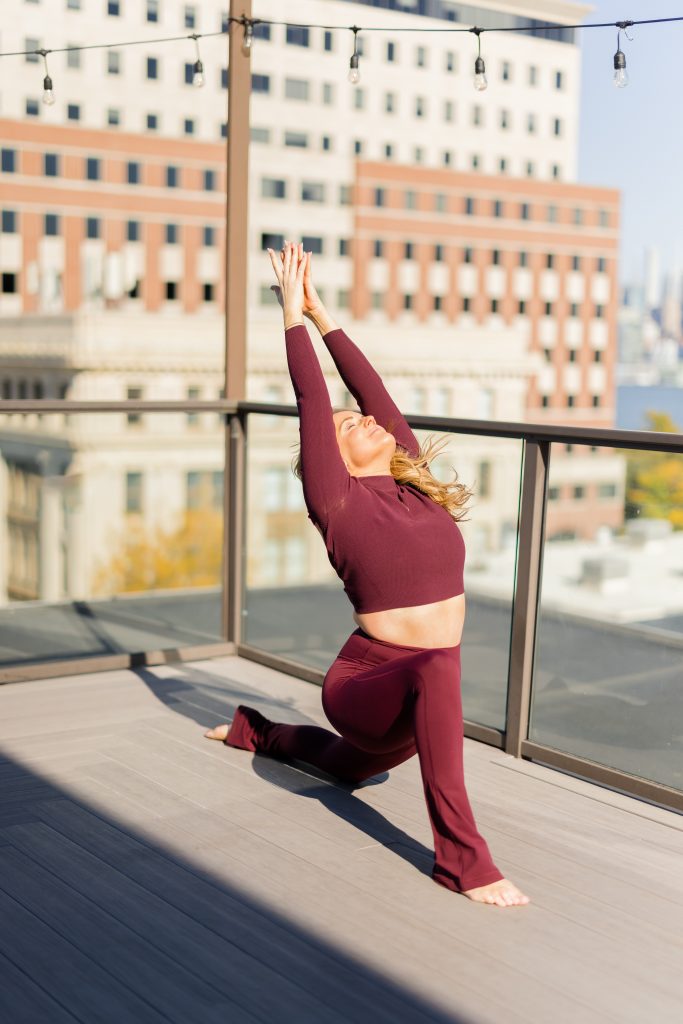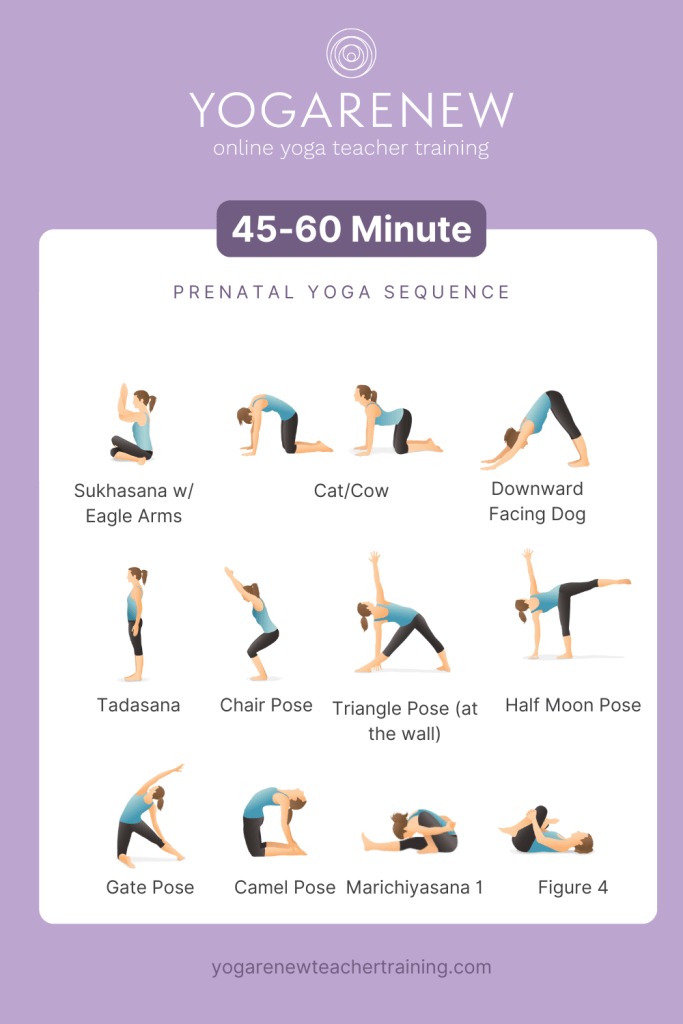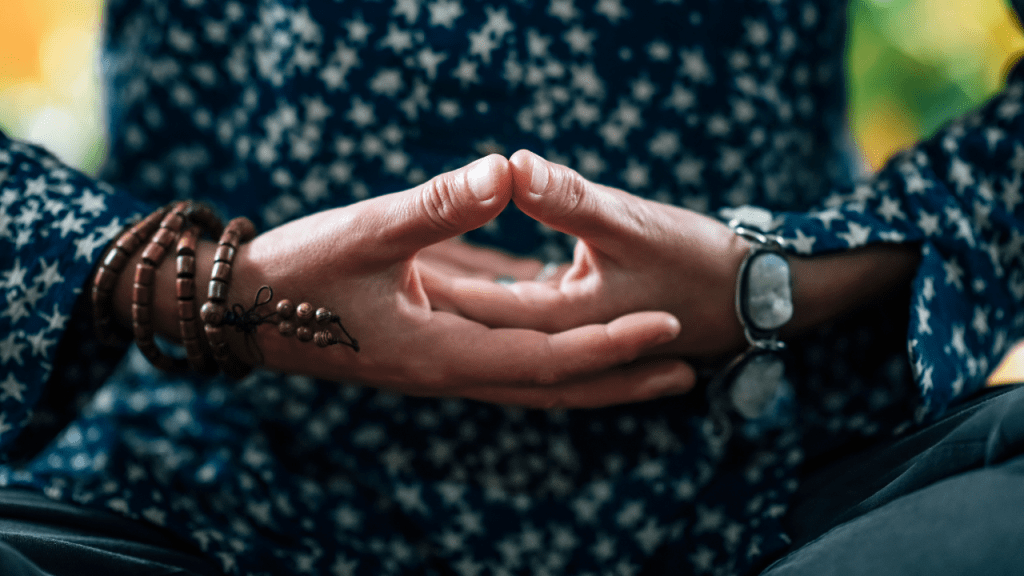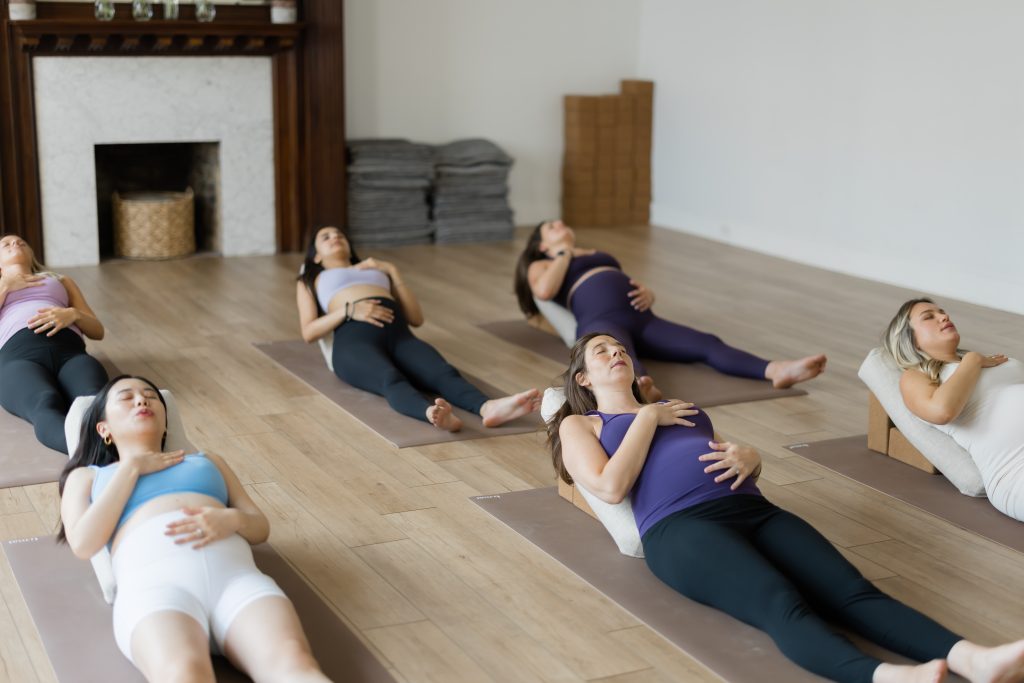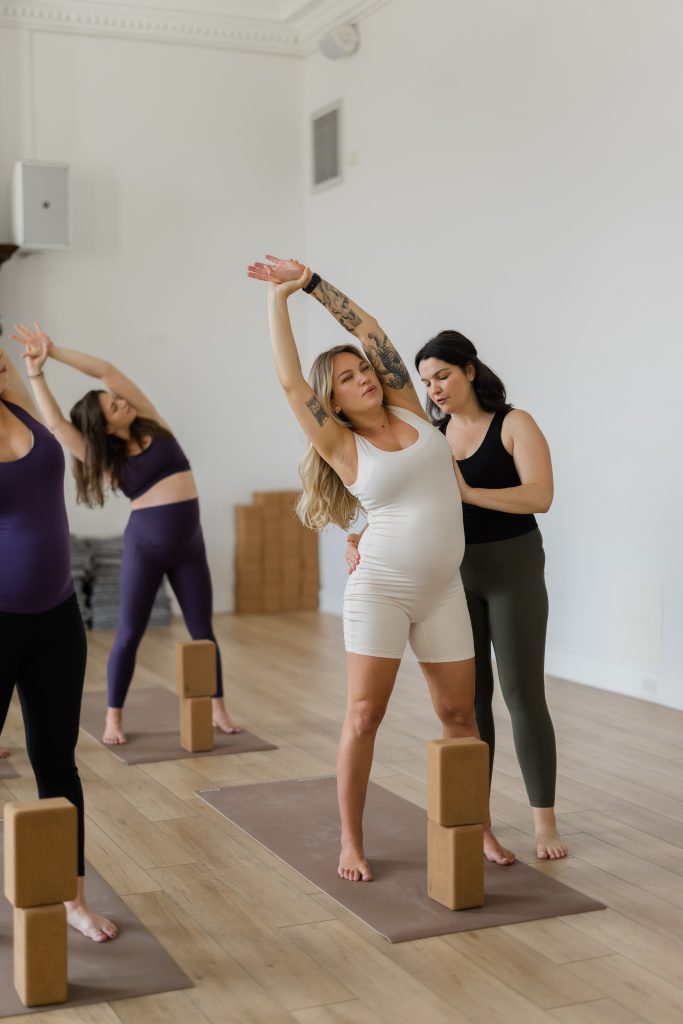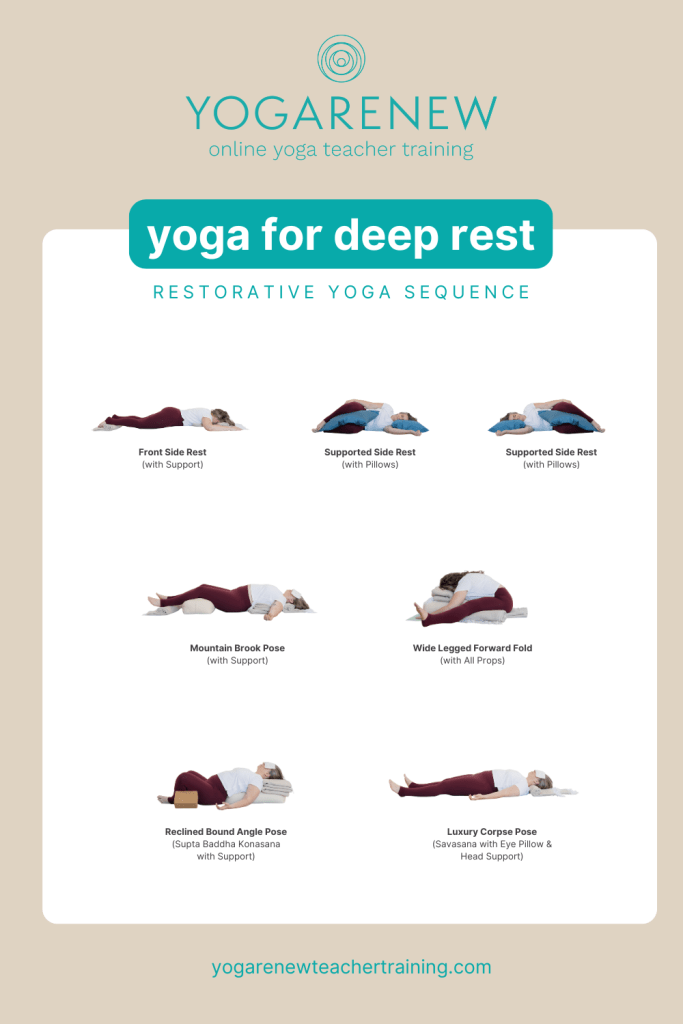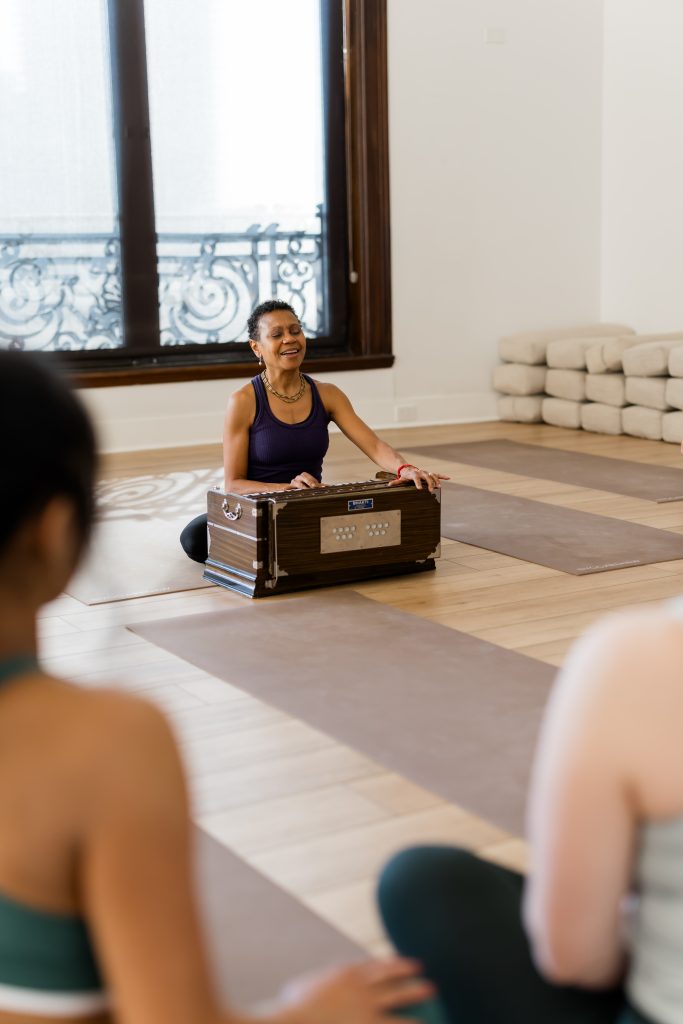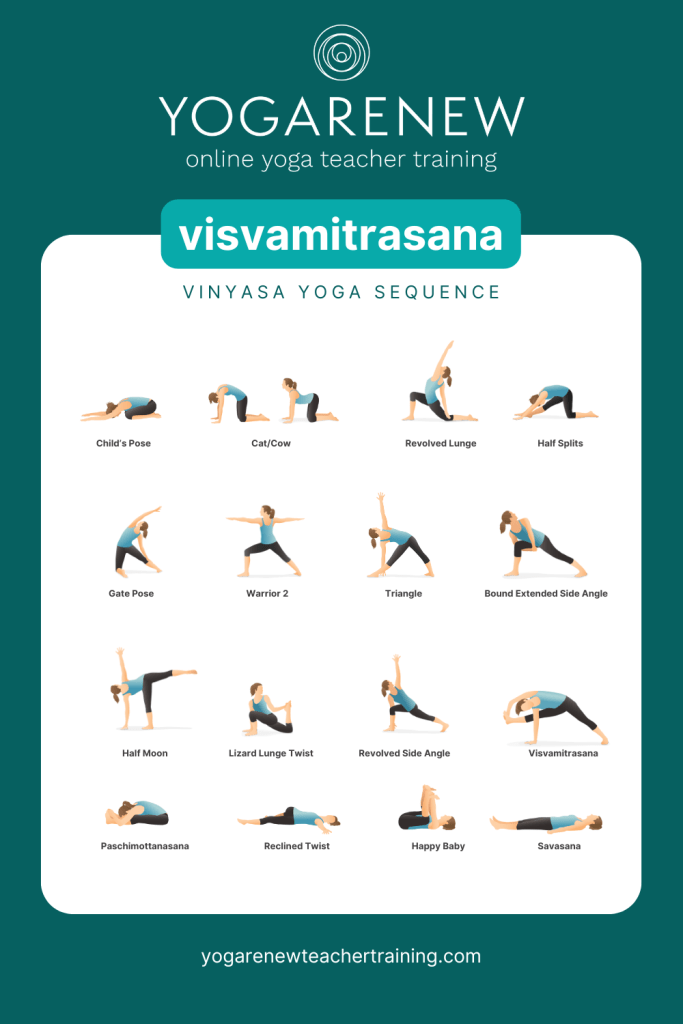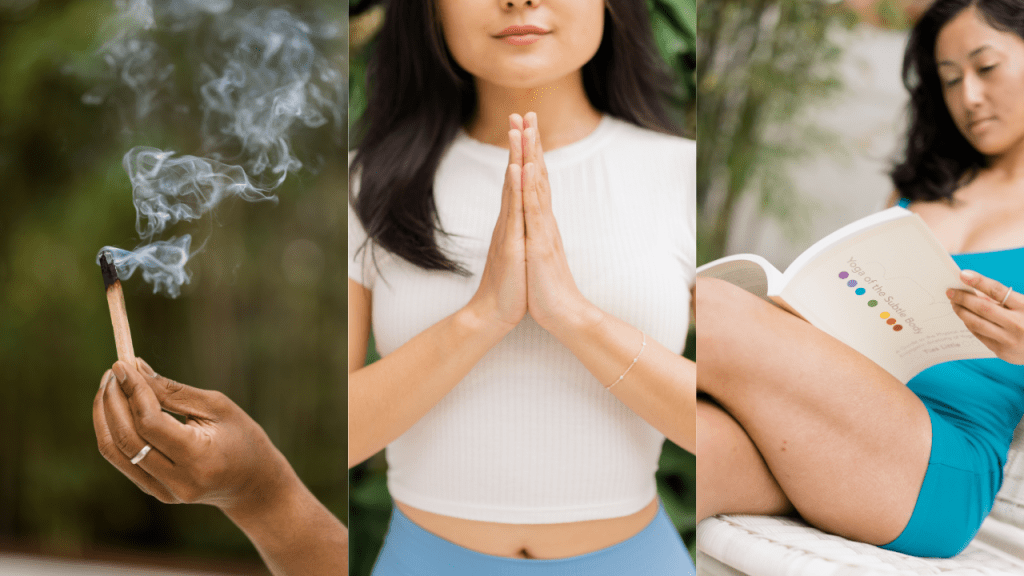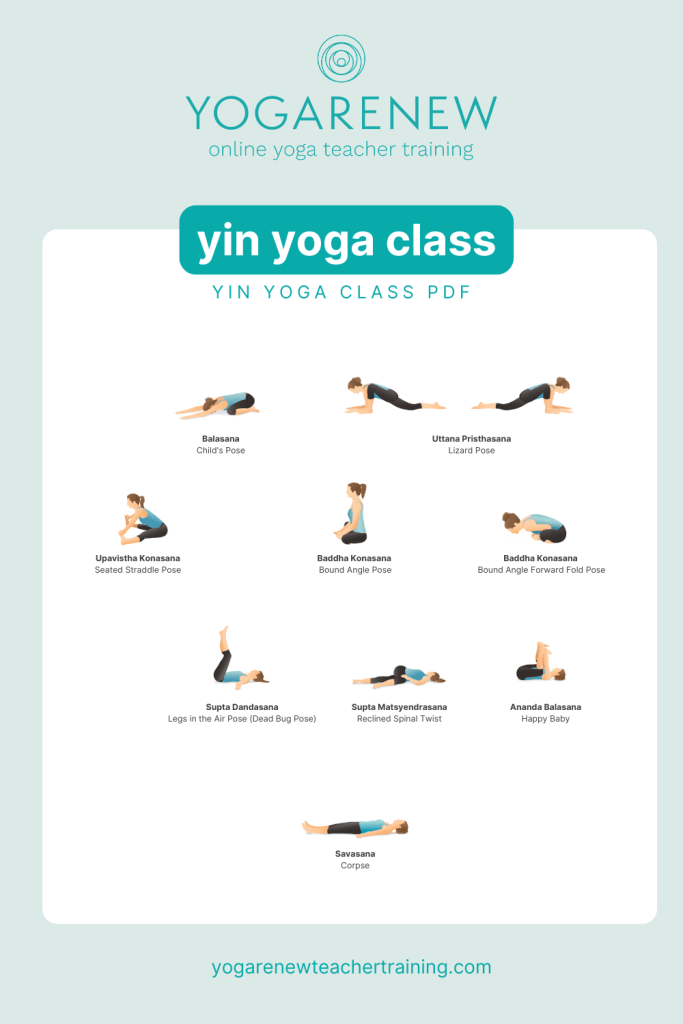
Theme: Inner Stillness and Spaciousness
Total Time: ~60 minutes
Props Needed: Bolster or pillows, blanket, blocks, wall space
1. Child’s Pose with Side Body Stretch
Time: 2 mins each side
Child’s Pose (Yin Yoga) How To:
- Bring your knees wide (option to go as wide as the yoga mat)
- Bring your big toes to touch
- Extend your arms forward
- Allow your forehead to rest on the mat or a block
- Invite your breath to deepen
- For a side body stretch, walk your hands to the right, placing the left palm on top of the right if that feels accessible
- Breathe into the space between your ribs
- Repeat on the left side
Mantra/Cue: “With every exhale, soften the weight of your body toward the earth. Create space where you may be holding tension.”
Transition/Coming Out of the Posture: Gently walk the hands back to center and slowly rise up to tabletop.
2. Lizard Lunge with Back Knee Down
Time: 3–5 mins each side
Lizard Lunge (Yin Yoga) How To:
- Step your right foot outside your right hand
- Lower your back knee
- Come down to your forearms on blocks or the mat
- Support your body as needed
- Repeat on the left side
Mantra/Cue: “Notice the sensations without trying to change them. This is a space to observe, not to fix.”
Transition/Coming Out of the Posture: Step gently back to tabletop, then slowly come to a seated position.
3. Upavistha Konasana (Wide-Legged Seated Forward Fold)
Time: 4–6 mins
Wide Legged Seated Forward Fold/Seated Straddle (Yin Yoga) How To:
- Extend your legs wide in a comfortable V-shape
- Use a bolster or block to rest your forearms or forehead or sit upright
- Let the spine round gently if you choose to fold forward – option to remain upright, hooking the big toes with your peace fingers
Mantra/Cue: “Let go of striving. Allow gravity to guide the fold, not force.”
Transition/Coming Out of the Posture: Gently roll up one vertebra at a time.
4. Baddha Konasana (Bound Angle Pose)
Time: 3 mins
Bound Angle Pose (Yin Yoga) How To:
- Bring the soles of your feet together, knees wide
- Allow the spine to stay tall
- Let your hands resting gently on your feet or thighs
Mantra/Cue: “Notice the natural rhythm of your breath. Feel the openness in your inner thighs and hips.”
Transition/Coming Out of the Posture: Stay here, or begin to fold forward for the next pose.
5. Baddha Konasana with Forward Fold
Time: 4–6 mins
Bound Angle Forward Fold Pose (Yin Yoga) How To:
- From Baddha Konasana, begin to hinge forward from the hips
- Let your spine naturally round forward
- Rest your forehead on a block or bolster
Mantra/Cue: “With each exhale, feel yourself melting closer to the earth, softening into stillness.”
Transition/Coming Out of the Posture: Inhale slowly to rise up. Prepare to move toward the wall for an inversion.
6. Legs Up the Wall (Viparita Karani)
Time: 6–10 mins
Legs Up the Wall (Yin Yoga) How To:
- Lie on your back with your legs extended up the wall
- Use a folded blanket under the hips or head for support
- Let your arms rest by your sides or on your belly
Mantra/Cue: “Let the legs be light and passive. Feel your body held by the floor beneath you.”
Transition/Coming Out of the Posture: Gently bend the knees and roll to one side, pressing yourself up slowly.
7. Supine Twist (Both Sides)
Time: 3–5 mins each side
Supine Twist (Yin Yoga) How To:
- Start by lying on your back
- Hug your knees to your chest
- Drop both knees to the right and open your left arm out to the side
- Head can turn left if comfortable
- Repeat on the left side
Mantra/Cue: “Let the breath guide you—soft, spacious, and easeful. Trust in the spiral of release.”
Transition/Coming Out of the Posture: Return to center. Hug knees to chest briefly.
8. Happy Baby
Time: 2–3 mins
Happy Baby (Yin Yoga) How To:
- Hold the outer edges of your feet or shins
- Bringing your knees toward the floor outside your ribs
- Rock gently or stay still
Mantra/Cue: “Invite a sense of playfulness. Notice where you can soften.”
Transition/Coming Out of the Posture: Release the feet, extend legs out long.
9. Savasana
Time: 8–10 mins
Allow the body to rest fully in stillness. Arms by your sides, palms up. Add a blanket over the body for warmth if you like.
Mantra/Cue: “There is nothing to do, nowhere to be. This is your time to receive.”
Transition/Coming Out of the Posture: When you’re ready, deepen your breath. Wiggle the fingers and toes. Roll gently to one side and press up to a comfortable seat. Take a moment to acknowledge the practice.


